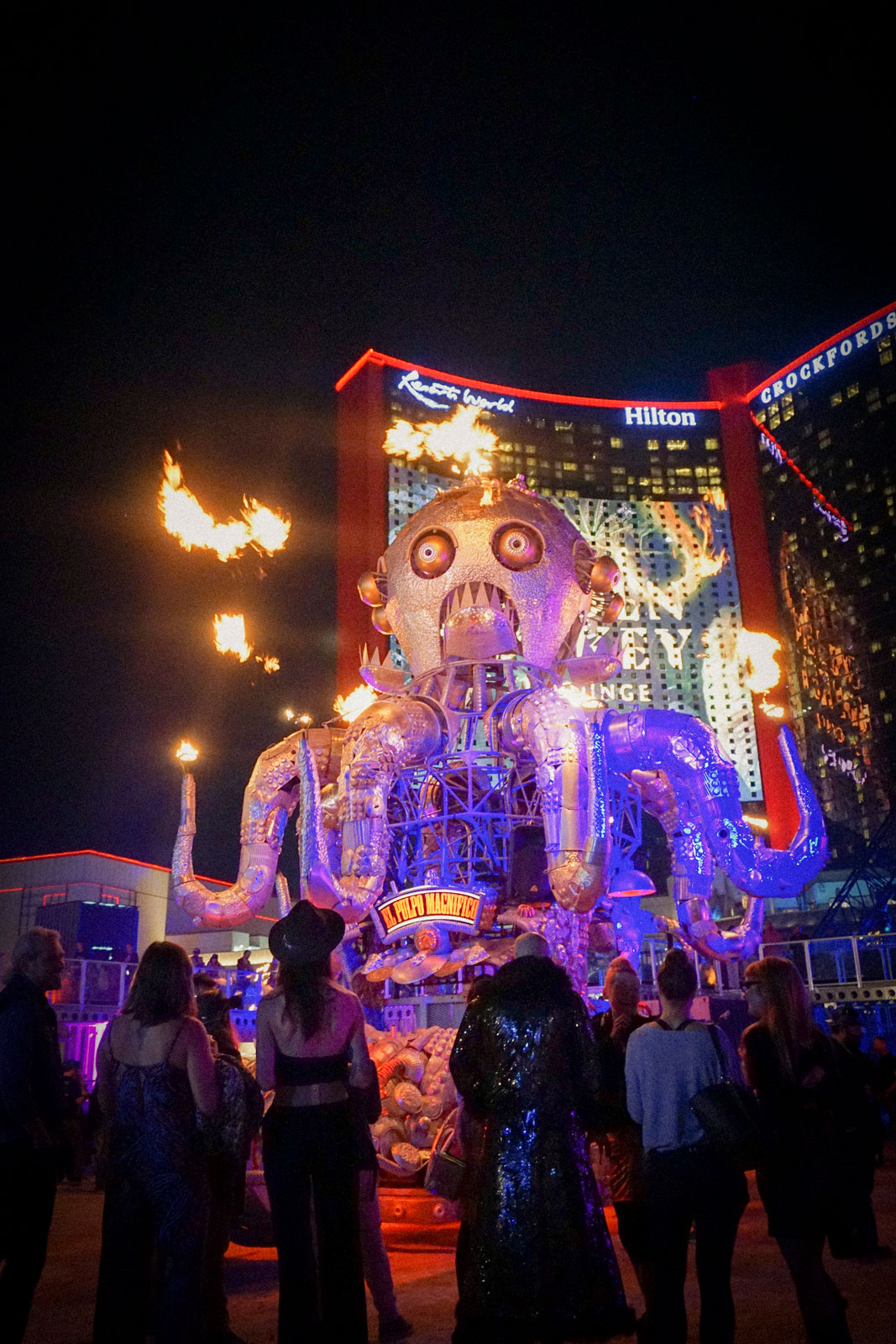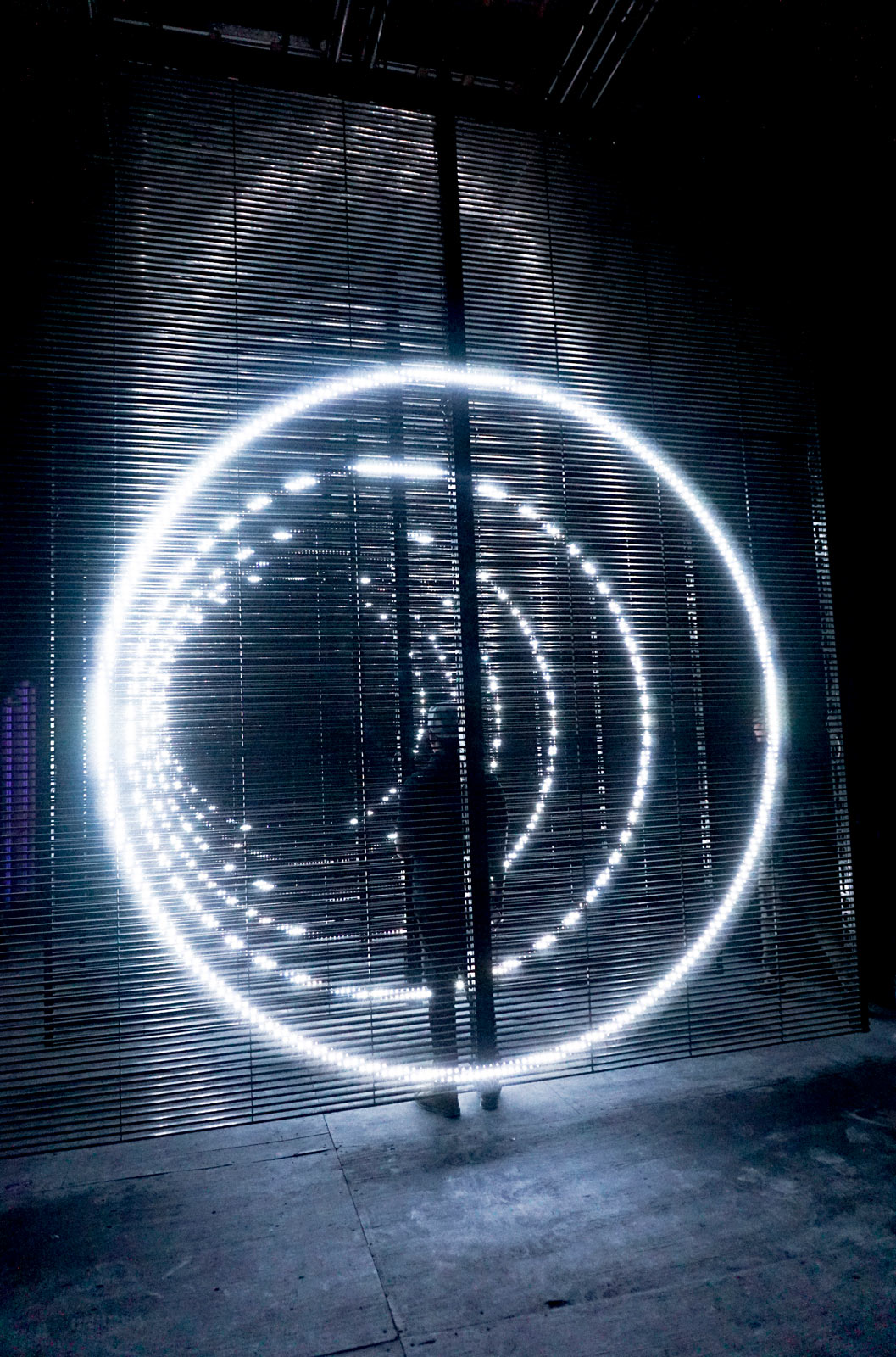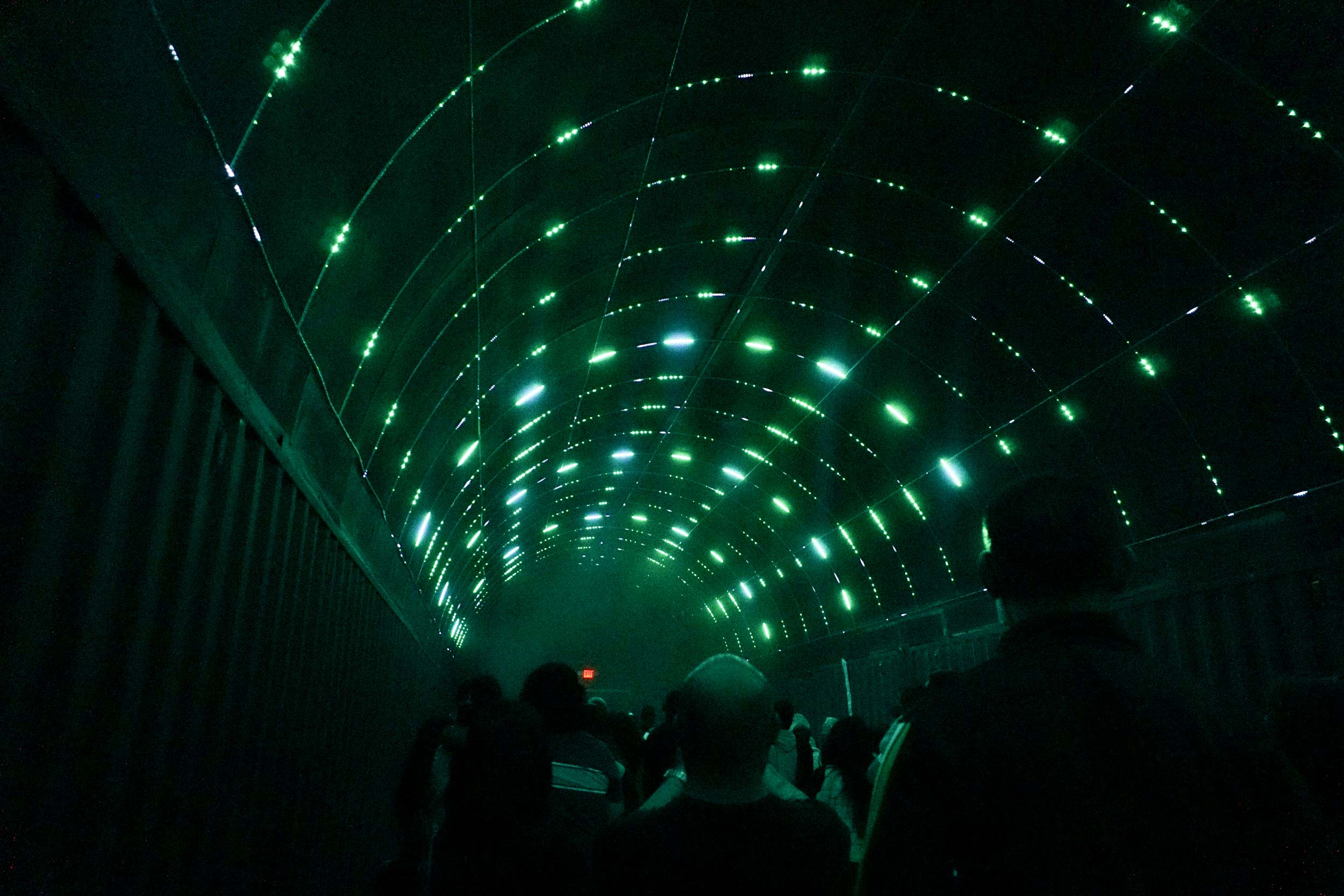Set in a multi-level labyrinth off the Las Vegas strip, the event’s inaugural edition is a choose-your-own-adventure featuring art from over 50 creators
When Tom Stinchfield set out to redefine immersive art, he didn’t know exactly what it would entail—but over the past three years, he and Michael Blatter have doggedly pursued that goal, putting their heads together to co-found TRANSFIX: a labyrinthian immersive art experience, set on a sprawling four-acre piece of land at Resorts World Las Vegas.
The pair first met at Burning Man, where they bonded over their shared love of experiential art. “We were always so inspired by these artists who were just creating for the sake of it,” Stinchfield says, explaining that large-scale works built during festivals are often ignored by the contemporary art market—left to gather dust in warehouses, rather than be appreciated by new viewers. It’s why TRANSFIX takes aim at creating a new economy around the artists themselves, championing those who have otherwise been excluded from the art-historical canon. “We wanted to make this kind of large-scale, immersive art more accessible to people,” Stinchfield says, describing how the event aims to disrupt the notion that art is something to be experienced only within the four walls of a gallery or museum.
Taking cues from festivals like Burning Man and FORMAT, TRANSFIX is intended to be experienced as a choose-your-own-adventure-style journey: Guests are encouraged to explore the multi-level spaces, interacting with a broad array of kinetic and often shape-shifting work along the way. These range from El Pulpo Mecanico—a fire-breathing art car—to Kate Raudenbush’s As Above, So Below, a 35-foot mirrored pyramid inspired by the fractal icosahedron of the mathematician Sierpinski. “We believe that interacting with art can change the world by illuminating one mind at a time,” states Stinchfield in the event’s press release. “If we can inspire even a fraction of our guests to restore their childlike wonder and curiosity—or explore their own personal creativity and expression—we’ve done our jobs well.”
“We wanted to offer something that expands those boundaries, and challenges people to try new things: to be more adventurous, to push the buttons, to participate. The future of immersive experience is interaction.”
By that measure, he’s likely to consider TRANSFIX’s opening weekend a success. As I wandered around the event grounds on the night of its VIP reception—which just so happened to fall on 4/20—adults and children alike seemed mesmerized (or perhaps, transfixed) by the array of “mind-melding” light and sound installations on offer, many of which seemed engineered to be experienced by those observing the holiday (which, by my estimation, was every adult in attendance—myself included). Other works were more participatory in nature, such as an installation powered by people on stationary bikes, or one that invited guests to take part in a three-minute meditation, during which their biometric data was said to fuel the movement of an accompanying 37-foot sculpture.
“With the whole van Gogh phenomenon, there’s a sense that immersive art is something that surrounds you in a room,” says Stinchfield, a self-described “experience junkie” who stages activations for brands as part of his work with Mirrorball, the marketing agency he and Blatter run together. “With TRANSFIX, we wanted to offer something that expands those boundaries, and challenges people to try new things: to be more adventurous, to push the buttons, to participate. The future of immersive experience is interaction.”
The inaugural TRANSFIX is on view until September 2023 in Las Vegas, when it will begin touring globally.































